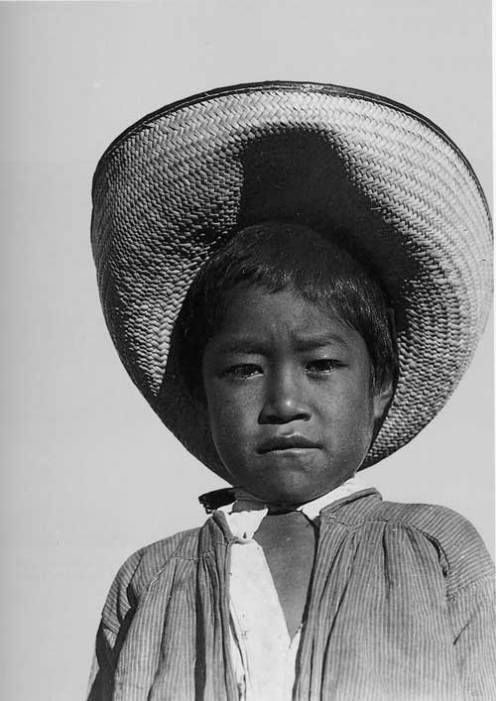Baby Nursing
Baby Nursing by Tina Modotti is a great example of the India Bonita (pretty Indian) being “modernized”. The photo has contributed to Modotti being symbolism for modernism. It’s a provocative photograph for the time it was created c. 1926-27. It's avant-garde because it shows the female indigenous body as "universal". The composition is of an indigenous Mexican child nursing at her mother’s breast. At the background of the photo, behind the child is a Mexican rebozo which is a garment worn mostly by women in Mexico. It’s worn in various ways and it’s usually as an accessory to provide shade to the upper body and warmth and to carry babies (Wolff, 2016). The rebozo is considered a huge part of Mexican identity, it was also used in Mexican traditional medicine as a way to support a woman in pregnancy as an aid for labor by supporting her and allowing for rhythmic movements and positioning aim of making childbirth easier.The photograph offers mystery and intimacy by concealing the background. According to Lesley Wolff
In the early post-revolutionary era, Mexican elites, intellectuals, and artists oscillated between an adoption of the indigenous past as a symbolic marker of national pride and a fear of actual, living indigenous peoples as vehicles of degeneracy.
This can be conflicting because photographs like Baby Nursing can be used as propaganda to make people remember the traditions of motherhood that was the foundation of female identity. The Mexican Revolution focused on marimacho (manliness) but also as a way to monitor female sexuality by reinforcing the patriarchal order. The image of Indian femininity threatened feminism and habits and it was viewed as “pure” and the modern woman signified sexual awareness and was viewed as “corrupted” (Zavala, 2010)
Artists in Mexico like Modotti and Garduño rediscovered the picturesque of indigenous Mexican culture but from my opinion, it misses the complexity of the culture. Women were prohibited from studying at the academy, just like in Europe where women were classified as being a distraction to male students. Historically, women artists were restricted to still live’s, flower paintings, and copying religious images and being compared to their male peers.
Women were also only looked at as muses. Images like Baby Nursing were the realities of many women’s lives in Mexico and were a reflection of the ideology that helped served the purpose to correct behavior. As women education became an issue and was becoming more available to women it was still used as a way to distance women and men. A women’s maternal role was deemed essential to the development of society, women were held responsible for gender-specific education to children (Zavala, 2010).
The photographing of indigenous women can be problematic because the capturing of people who skins are darker are made to appear “a little less human” and those who see the photographs are made to feel as if they are more human than those captured on film. Picturing Mexico as “exotic” was also a way to create more tourism to Mexico as it was also used to limit the appearance of Indians. The photographs created by artists influence what the rest of the world will portray Mexico as. The photographs that we see today from post-revolution Mexico contributed to the national identity. Artists like Modotti and Garduño created a visual aid of Mexico as a way to capture civilian activities and the beauty to protect them. The photographs could have been considered as a way for Mexico to entice visitors and create a new way for Mexico impoverish community to thrive in (Zavala, 2010).


